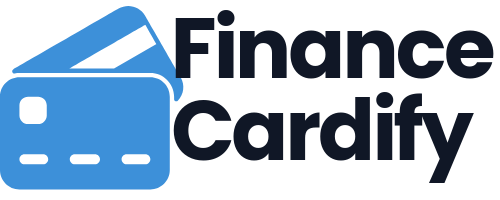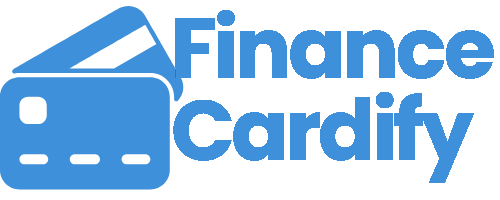The concept of credit often conjures images of debt, complicated numbers, and frustrating application processes. However, a more empowering truth exists: your credit standing isn’t a financial burden; it’s a financial tool—a measure of trust that, when wielded correctly, becomes a significant source of personal power and opportunity.
In the complex ecosystem of modern finance, mastering your credit is foundational to achieving broader financial freedom. This isn’t just about qualifying for a loan; it’s about dictating the terms of your own life, from where you live to what you pay for essential services.
This article will dismantle the myths surrounding credit, illuminate its true impact, and provide actionable strategies for taking complete control of your financial future.
The Hidden Hand of Credit
Many people view credit as solely a matter of borrowing money, but its influence is far more pervasive. Your credit score—a three-digit number summarizing your credit risk—is a dynamic reflection of your financial reliability. Lenders use it, of course, but so do others:
- Insurance Companies: They often use credit-based insurance scores to determine your premiums for auto and home insurance. A better score can translate into hundreds of dollars in savings annually.
- Landlords: Before signing a lease, a prospective landlord will almost certainly check your credit report to assess your history of paying debts on time, treating it as a proxy for your reliability as a tenant.
- Employers (in some industries): In financial services or positions requiring security clearance, employers may check credit history to evaluate a candidate’s trustworthiness and responsibility.
- Utility Providers: When setting up service for electricity or gas, a low credit score might result in being charged a hefty security deposit.
In essence, a good credit score lowers the cost of living and expands your access to opportunities, while a poor score acts as a financial headwind, increasing expenses and limiting choices. Understanding this fundamental truth is the first step in claiming your power.
Deconstructing the Score: The Five Pillars of Power
To control your credit score, you must understand what builds it. FICO and VantageScore, the most common scoring models, use slightly different weightings, but they rely on the same five core factors. Mastering these five pillars is the roadmap to a powerful credit profile:
1. Payment History (The Most Important Factor: ~35%)
This is the single biggest determinant of your score. Are you paying on time? Late payments, especially those exceeding 30 days, are severely damaging. The goal here is absolute perfection. Set up automatic payments for every single debt (credit cards, loans, mortgage, etc.) to ensure you never miss a due date. Consider even paying a few days early to build in a buffer.
2. Credit Utilization Ratio (The Second Most Important: ~30%)
This factor measures the amount of credit you are using versus the total amount available to you. For instance, if you have a credit card limit of $10,000 and a balance of $2,000, your utilization is 20%.
The Golden Rule: Keep your utilization below 30% across all cards, but ideally below 10% for maximum score benefit. A utilization rate above 50% signals financial strain and will significantly drop your score. You can improve this ratio by either paying down debt or (if your finances allow) requesting a credit limit increase.
3. Length of Credit History (The Age Factor: ~15%)
Lenders like to see a long, established history of responsible borrowing. This is why you should never close your oldest credit accounts, even if you don’t use them often. The average age of your accounts contributes to this factor. If you open many new accounts quickly, it will lower the average age and temporarily decrease your score. Time is your ally here.
4. Credit Mix (The Variety Factor: ~10%)
The scoring models reward borrowers who can responsibly handle a variety of credit types. This means having a healthy combination of revolving credit (like credit cards) and installment credit (like mortgages, auto loans, or student loans). Note: This factor matters less than the first two, and you should never take out a loan just to improve your mix.
5. New Credit (The Inquiry Factor: ~10%)
When you apply for credit, a hard inquiry is placed on your report, which can slightly—and temporarily—lower your score. Too many hard inquiries in a short period (such as opening five credit cards in six months) suggests desperation or high-risk behavior to lenders. Be strategic: only apply for credit when you truly need it.
The Power of Prevention: Monitoring and Maintenance
Taking control of your finances is an active, ongoing process, not a one-time fix.
1. Obtain and Review Your Reports
You have the right to a free credit report from each of the three major credit bureaus (Equifax, Experian, and TransUnion) once every 12 months. Utilize this right. Reviewing your reports is critical because:
- Spotting Errors: Studies show that a significant percentage of credit reports contain errors. A reporting mistake (like a debt that isn’t yours or a payment marked late when it wasn’t) could be costing you valuable points.
- Detecting Identity Theft: Unfamiliar accounts or inquiries are a major red flag for fraud.
If you find an error, dispute it immediately with the credit bureau. This process is your right and a direct mechanism for correcting your financial record.
2. The Debt Snowball vs. Avalanche
If you are currently carrying high-interest debt, a powerful credit profile will remain out of reach until you tackle it. Two popular strategies for debt repayment are:
- Debt Avalanche: Pay down the debt with the highest interest rate first, regardless of the balance. This is mathematically the most efficient method, saving you the most money in interest over time.
- Debt Snowball: Pay down the debt with the smallest balance first. This provides psychological “wins” that can keep you motivated, even if it costs slightly more in interest.
Choose the method that best aligns with your personality and stick to it relentlessly.
3. Strategic Use of Credit Cards
For most people, credit cards are a necessary part of building a great credit score. They are tools, and like any powerful tool, they require respect.
- Pay in Full: Never treat a credit card as an extension of your income. Pay the entire statement balance every single month. This avoids interest charges and keeps your utilization ratio at zero.
- Budgeting: Use the card for expenses you already budget for (gas, groceries, utilities). The rewards are a bonus, not a reason to spend more.
Conclusion: Your Financial Liberation
Credit is not a mystery to be feared; it is a system of rules to be learned and mastered. The difference between a high credit score (say, 780+) and a low one (say, 620-) can translate into tens of thousands of dollars saved on interest and insurance over a lifetime.
Your credit is your leverage. It determines the size of the opportunities presented to you and the price you must pay to access them. By consistently prioritizing your payment history, strategically managing your utilization, and proactively monitoring your reports, you move from passively accepting the financial hand you’re dealt to actively designing your financial destiny.
Embrace the knowledge, implement the strategies, and reclaim your power. The path to true financial control begins today.





